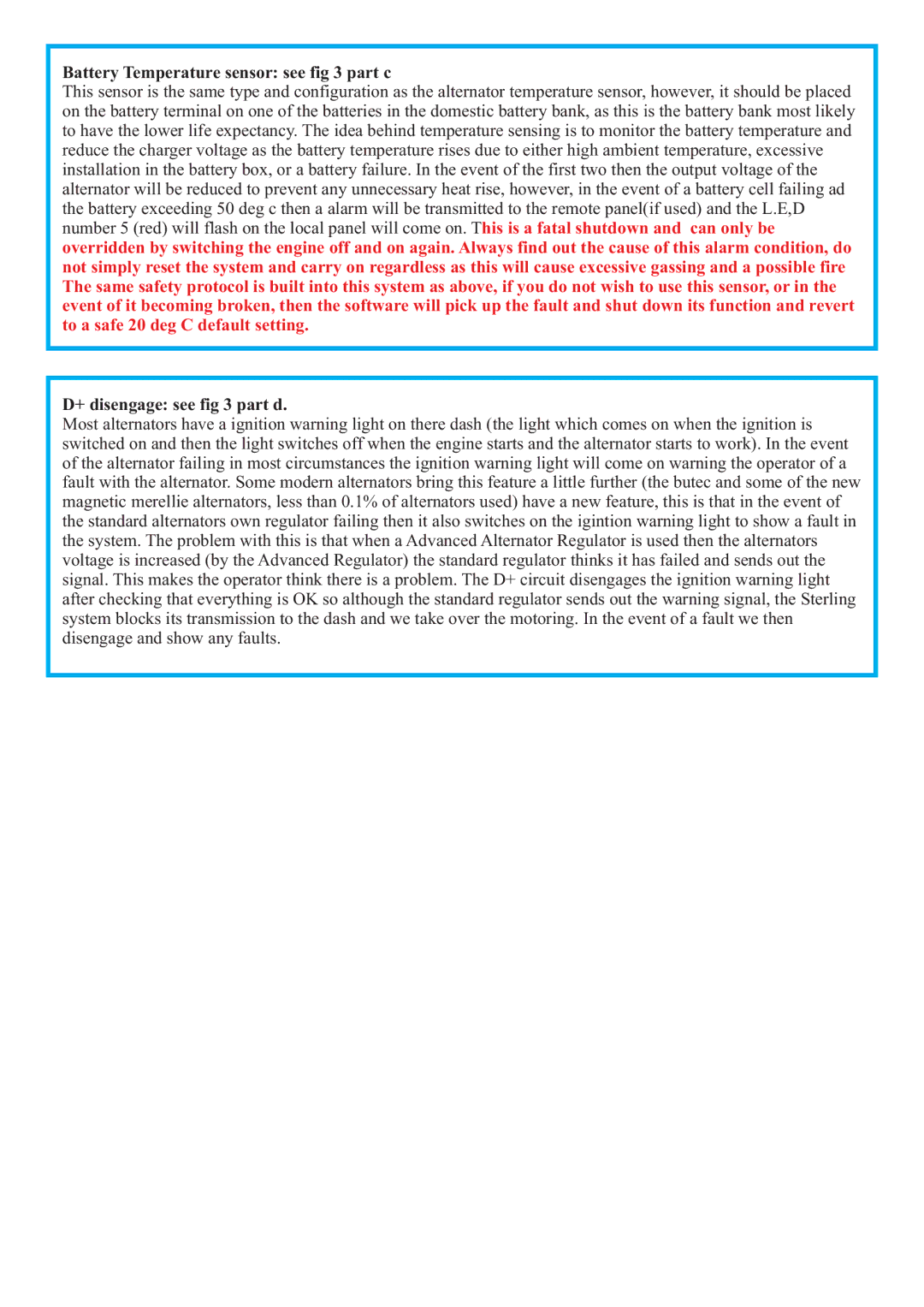
Battery Temperature sensor: see fig 3 part c
This sensor is the same type and configuration as the alternator temperature sensor, however, it should be placed on the battery terminal on one of the batteries in the domestic battery bank, as this is the battery bank most likely to have the lower life expectancy. The idea behind temperature sensing is to monitor the battery temperature and reduce the charger voltage as the battery temperature rises due to either high ambient temperature, excessive installation in the battery box, or a battery failure. In the event of the first two then the output voltage of the alternator will be reduced to prevent any unnecessary heat rise, however, in the event of a battery cell failing ad the battery exceeding 50 deg c then a alarm will be transmitted to the remote panel(if used) and the L.E,D number 5 (red) will flash on the local panel will come on. This is a fatal shutdown and can only be overridden by switching the engine off and on again. Always find out the cause of this alarm condition, do not simply reset the system and carry on regardless as this will cause excessive gassing and a possible fire The same safety protocol is built into this system as above, if you do not wish to use this sensor, or in the event of it becoming broken, then the software will pick up the fault and shut down its function and revert to a safe 20 deg C default setting.
D+ disengage: see fig 3 part d.
Most alternators have a ignition warning light on there dash (the light which comes on when the ignition is switched on and then the light switches off when the engine starts and the alternator starts to work). In the event of the alternator failing in most circumstances the ignition warning light will come on warning the operator of a fault with the alternator. Some modern alternators bring this feature a little further (the butec and some of the new magnetic merellie alternators, less than 0.1% of alternators used) have a new feature, this is that in the event of the standard alternators own regulator failing then it also switches on the igintion warning light to show a fault in the system. The problem with this is that when a Advanced Alternator Regulator is used then the alternators voltage is increased (by the Advanced Regulator) the standard regulator thinks it has failed and sends out the signal. This makes the operator think there is a problem. The D+ circuit disengages the ignition warning light after checking that everything is OK so although the standard regulator sends out the warning signal, the Sterling system blocks its transmission to the dash and we take over the motoring. In the event of a fault we then disengage and show any faults.
